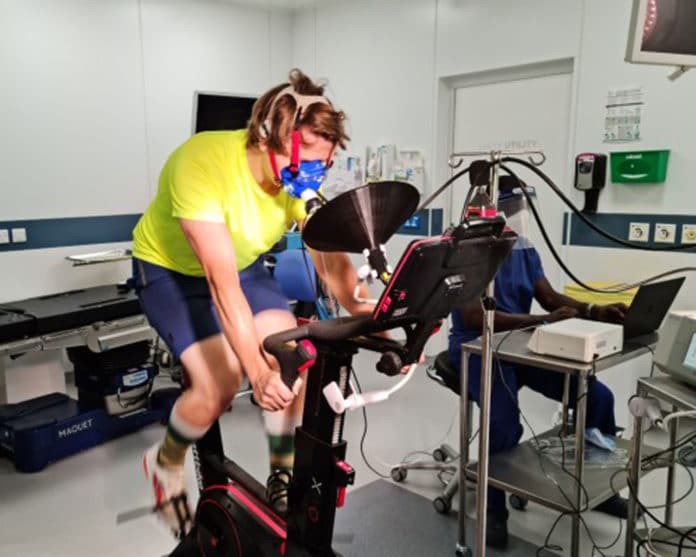SARS-CoV-2, the virus that causes COVID-19, and other respiratory viruses are spread through respiratory particles released during breathing or speaking. The rate at which these particles are emitted will have a role in virus transmission.
A new study by the University of Bristol is the first that measures exhaled aerosols generated during exercise. This is the first study of its kind in which scientists measured the size and concentration of exhaled particles during vigorous and high-intensity exercise. The study could help inform the risk of airborne viral transmission of SARS-CoV-2 for indoor exercise facilities and sporting and physical group activities.
In this study, 25 healthy individuals, who were free from significant cardiovascular or respiratory illness, were recruited to include a range of athletic abilities across both sexes. The participants were asked to undergo maximal cardiopulmonary exercise testing (CPET) on a cycle-ergometer.
The participants breathed into a specially adapted mask which measured airflow and transmitted any particles emitted from their mouth and nose to a particle counter.
As scientists performed the experiment in an orthopedic operating theatre — an environment of zero aerosol background, they could unambiguously identify the aerosols generated by the participants.
Scientists found that the size of airborne particles released was comparable to that of a person breathing normally during strenuous exercise. The pace at which people exhale aerosol mass during strenuous activity, on the other hand, was found to be comparable to speaking at a conversational volume.
Jonathan Reid, Director of ESPRC Centre for Doctoral Training in Aerosol Science and Professor of Physical Chemistry in the School of Chemistry at the University of Bristol and scientific lead on the paper, said: “COVID-19 has profoundly impacted sports and exercise, and this study provides a comprehensive analysis of the mass emission rates of aerosol that can potentially carry infectious virus produced from an individual during exercise.”
“Our research has shown that the likely amount of virus that someone can exhale in small aerosol particles when exercising is comparable to when someone speaks at a conversational volume. The most effective way to reduce risk is to ensure spaces are appropriately ventilated to reduce the risk of airborne transmission.”
Journal Reference:
- Orton, C.M., Symons, H.E., Moseley, B. et al. A comparison of respiratory particle emission rates at rest and while speaking or exercising. Commun Med 2, 44 (2022). DOI: 10.1038/s43856-022-00103-w
